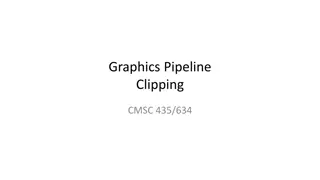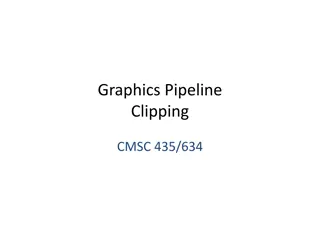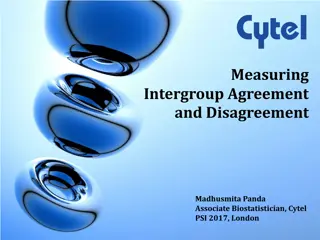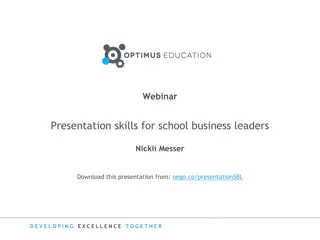
Absorptive Capacity in Organizations
Explore the concept of absorptive capacity, which involves recognizing new information's value, assimilating it, and applying it for innovation. Discover how prior knowledge, cognitive structures, learning capabilities, and effective communication play crucial roles in enhancing absorptive capacity within firms.
Download Presentation

Please find below an Image/Link to download the presentation.
The content on the website is provided AS IS for your information and personal use only. It may not be sold, licensed, or shared on other websites without obtaining consent from the author. If you encounter any issues during the download, it is possible that the publisher has removed the file from their server.
You are allowed to download the files provided on this website for personal or commercial use, subject to the condition that they are used lawfully. All files are the property of their respective owners.
The content on the website is provided AS IS for your information and personal use only. It may not be sold, licensed, or shared on other websites without obtaining consent from the author.
E N D
Presentation Transcript
Cohen, W. M. and D. A. Levinthal (1990). "Absorptive Capacity: A New Perspective on Learning and Innovation." Administrative Science Quarterly 35(1): 128-152. Presented by: Jeff Savage
Introduction What is Absorptive Capacity? The ability to recognize the value of new information, assimilate it, and apply it to commercial ends. How is it generated? Most innovations result from borrowing from others Prior knowledge gives one the ability to acquire new information Firms that have their own R&D are better able to use external information.
Cognitive Structures The Premise The organization needs prior related knowledge to assimilate and use new knowledge. Cognitive Science Research: accumulated prior knowledge increases the ability to put new knowledge into memory as well as the ability to recall and use it. For example: Learning a 3rdlanguage is always easier than learning a 2ndlanguage. PS-What do you call someone who speaks 2 languages? 3? 1? Learning in one skill may even transfer across bodies of knowledge through associative learning or learning how to learn. (Dierickx & Cool 1989)
Learning There is little difference between Learning Capabilities and Problem Solving Skills` LC: The development of the capacity to assimilate existing knowledge PSS: A capacity to create new knowledge The more effort applied to learning the better the subsequent retrieval. Practice makes perfect. A diverse background provides a more robust basis for learning in uncertain situations and stimulates creativity by associating to more linkages.
The Firms Absorptive Capacity Not simply the sum of the AC of employees It depends on the transfers of knowledge across environmental boundaries & between subunits What does effective communication require? Gatekeepers can help transfer information across boundaries, translate hard-to-understand information, and serve as repositories of knowledge. Shared language and symbols (ex: Blueprints) Maintaining the balance between inward- and outward-looking absorptive capacities is HARD.
The Firms Absorptive Capacity cont. Diversity is key! Diverse knowledge structures in the same mind elicit the sort of learning and problem solving that yields innovation Interactions among diverse structures should lead to more novel linkages and associations During this part of the discussion, think on how/if this logic echoes Montgomery and Wernerfelt s (1988) idea that firms that diversify should expect the lowest average rents How to do this? Hiring new workers; job rotation, etc. It s about What you know and Who you know.
Path Dependence & Absorptive Capacity A low initial investment can have big consequences 1. New opportunities may not be recognized 2. Firms may be locked out of new ideas, as they may be too distant to be properly appreciated/assessed. 3. NIH Syndrome. 2 More Benefits Highly reactive firms don t (necessarily) wait for failure to spur development. Firms that have their own R&D are better able to use external information.
Absorptive Capacity and R&D Investment R&D Not only generates new knowledge but contributes to the firms absorptive capacity 2 Factors affect a firm s incentive to learn Quantity of knowledge (More=Greater Incentive) Difficulty (cost) of learning. For a given level of R&D, the level of absorptive capacity is diminished in environments in which it more difficult to learn. Learning is also determined by the characteristics of the knowledge. Complexity and fit to firm are important. Less targeted knowledge require more work from R&D. The more a field is based on prior knowledge, the more important is R&D.
Model: How does Absorptive Capacity affect R&D? R&D Intensity -Demand Level of sales and elasticity of demand -Appropriability Degree to which firm captures profits associated with their innovation; captures knowledge spillovers to public -Technology Opportunity How costly is it to achieve technical advance in industry
Model: Sources of a firms technical knowledge Key Assumption Exploitation of competitors research is realized through the interaction of the firm s absorptive capacity w/ competitors spillovers
Measure Operationalization Results Due to data constraints could not observe direct of effects or its determinants on firms R&D spending Ease of Learning When learning is difficult, high absorptive capacity becomes more important. Survey w/ managers on the relevance and importance of the science base and of industry sources of knowledge Technological Opportunity The results confirmed that when learning is difficult, an increase in relevance spurs R&D intensity. As the market becomes more competitive, a high appropriability becomes important too. It seems that the positive absorption incentive associated with spillovers can overcomes the negative appropriability incentive. Used Levin et al. s survey of the effectiveness of several IP protection mechanisms, including patents, secrecy, lead time, etc. Appropriability
Implications and Discussion Firms may engage in basic research that has high spillover because it gives them the skill to exploit innovations quickly. When a firm wishes to acquire and use knowledge unrelated to its ongoing activity, it cannot simply partner with other firms, or buy the technology, it should be prepared to invest internally in the absorptive capacity that will permit effective exploitation. Is absorptive capacity a core capability, a core rigidity, or something else entirely?






















